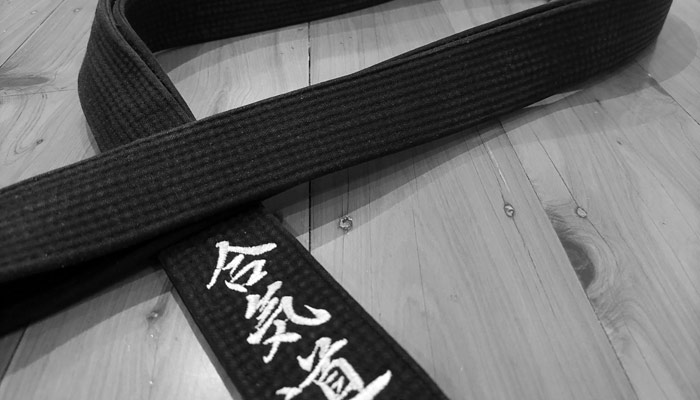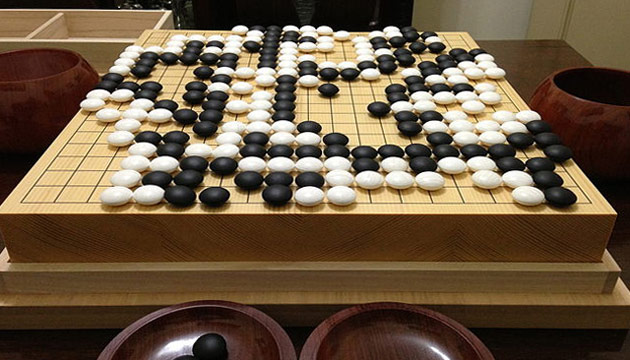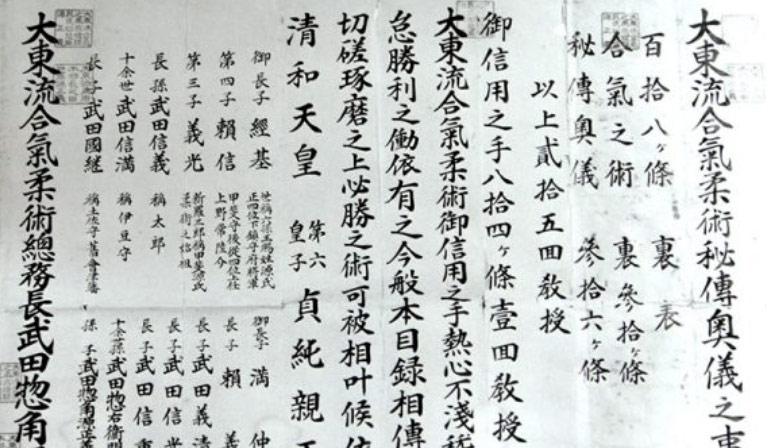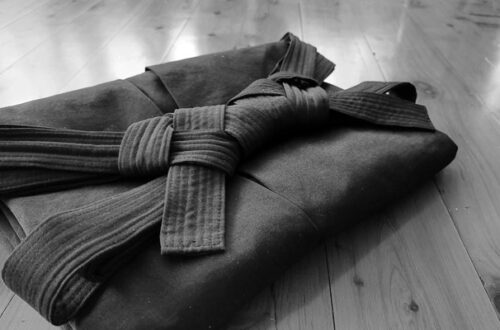
Development of Dan Ranking System in Japanese Martial Arts and its Adoption in Aikido
Martial arts have been an integral part of Japanese culture for centuries. One of the most significant aspects in their development is the introduction of the dan ranking system. The term “dan” 段, which literally means “stage”, was first used by Sansa Honinbo 本因坊 算砂, the founder of the Honinbo Go school in the late 16th century. Go 囲碁 is a traditional strategy board game originated from China and introduced to Japan around the 7th century. The game is played by two players who take turns placing black and white stones on a square grid board. The objective is to gain more territory on the board than your opponent by surrounding and capturing their stones. Honinbo, one of the best players at his time, developed the Kyu/Dan system to rank players’ levels. And only high ranked players would compete in the presence of the Shogun 将軍.

Go 囲碁
Before the dan system, menkyo 免許 were commonly granted to koryu martial art students by their master as a recognition of their skill and expertise. The menkyo system served as proof, allowing them to teach others and pass on their knowledge. Depending on individual schools, there were also different types of menkyo which led to the ultimate menkyo kaiden 免許皆伝, which was only given to limited students or the next heir of the art. Menkyo was also often accompanied with densho 伝書, a manuscript that may have included kata, lessons, techniques, and secrets.
It wasn’t until 1883 that the dan system was first introduced into martial arts by Jigoro Kano 嘉納 治五郎, the founder of Judo. As an educator, Kano saw the limitations of the menkyo system in that it was difficult to evaluate or compare the skill levels of students from different schools. To address this issue, Kano created the dan ranking system for judo and awarded the first shodans to his two students, Tsunejiro Tomita 富田 常次郎 and Shiro Saigo 西郷 四郎. Kano believed that by creating a system of rankings based on skill and knowledge, he could provide his students with a clear path for progression and help them develop a sense of accomplishment and pride in their achievements.

A Daito Ryu Aikijujtsu Menkyo
Gichin Funakoshi 船越 義珍, known as the “father of modern karate,” later incorporated the dan system into Shotokan 松濤館 Karate-do in 1924. The dan system was gradually adopted by other martial arts, including Aikido, which Morehei Ueshiba adopted around 1940. There was no test, new dan promotions were displayed on wall in Kobukan 皇武館 dojo once a year during kagamibiraki 鏡開き, a traditional Japanese ceremony. Some of Ueshiba’s senior students were quickly promoted to high dan grades, e.g. Kenji Tomiki 富木 謙治 was awarded the first ever 8th dan in the same year. Ueshiba did not place a lot of emphasis on rank, and there were many occasions he said someone should be a 6 or 7 or even a 10 dan when that individual seemed to understand and impressed him momentarily. This became problematic for the Aikikai Foundation when official certificates were requested. According to Yasuo Kobayashi 小林 保雄, one solution proposed by Kisshomaru Ueshiba was certificates printed with Aikikai’s name and signed by Ueshiba himself, bypassing the standard Aikikai procedures.
It has been suggested by some of Ueshiba’s students, including Morihiro Saito 斉藤 守弘, that it was quite common for senior students to skip dan ranks between the 1950s and 1960s. As Aikido was a relatively new martial art at the time, it was understandable that Aikikai would like to accelerate its development and promote Aikido by having more high-ranked practitioners. More information on this topic can be found in the article “Dan Inflation in Early Years of Aikido” by Stanley Pranin, published in Aikido Journal.
While the dan system may hold different or has little meaning for different individuals, it has become a widely recognized standard for ranking and acknowledging martial arts proficiency across the world. The system has played a crucial role in motivating practitioners to continue their journey and improve their skills, providing them with a sense of accomplishment and pride.
Suggested reading: The Story Behind Aikido’s Traditional Attire: Hakama
Author’s Note: We appreciate your readership! This article serves as a preliminary introduction to the subject matter. While we aim for accuracy, we cannot guarantee the content’s precision and it may contain elements of speculation. We strongly advise you to pursue additional research if this topic piques your interest. Begin your AikidoDiscovery adventure! 🙂




